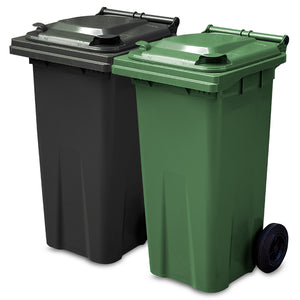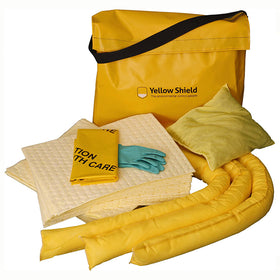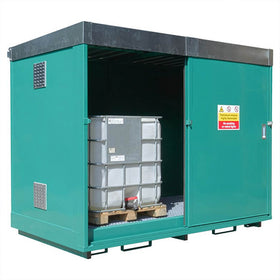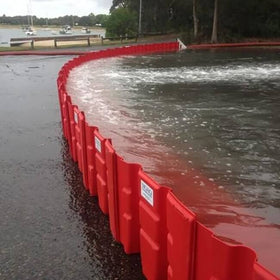Are Spill Kits simply a Badge of Compliance or do they have a Use? 10 Questions to Answer.
Why do people buy Spill kits? Because the Health and Safety Manager tells them to do so? Because it is part of their quality standards? Because of a management commitment to protecting the environment?
Or do they identify potential spill risks on their site and design appropriate prevention and response measures?
Whatever the motivation for purchasing spill kits, some key questions need to be asked to achieve effective environmental protection.
Question 1 – Where do you start in equipping your plant with spill kits?
A Site Spill Risk Assessment must be the starting point. It does not need to be formal. Your site may be quite simple with only fuels, lubricating oils and cleaning chemicals handled and stored in any volume on site and you may have experienced staffwho can do the assessment. Or you may wish to call in specialist spill risk assessors. Many of the professional spill equipment supply companies will give such a Site Assessment free of charge. (link).
Question 2– Do you know your drainage plan?
Spill risk hinges around prevention of pollution of the water course. Any spill risk site
assessment needs a plan of the surface water drains (which legally should be marked blue) and foul water drains (marked red).The drainage plan together with knowledge of the storage and movement of liquids on site gives a sound basis for planning spill prevention.
Question 3 – Have you fully reviewed Spill Prevention before providing spill clean up facilities?
The key spill risks normally occur with bulk and drum liquid storage, movement and handling. Adequate bunding of liquid stores is a legal requirement and a big subject, but should be thoroughly investigated before planning spill clean up activities. Management procedures, supervision and planning of liquid movements again should be a precursor to deploying spill kits.
Question 4 – What is the evidence for the keys to successful spill response.
BP UK Logistics carried out an investigation of several hundred accidents over the last 5 years (link to EA report) and asked why there was an accident and why people failed to follow procedures. The result was a focus on management procedures before they moved to providing equipment or training the workforce. For example is the discharge of bulk oils and chemicals from tankers always supervised by an on site operator?
Question 5 - Having reviewed procedures on site what should I be looking for in spill response measures?
With the best risk assessment and spill prevention measures, accidental spills and leaks will occur. Starting with the areas of most serious consequences and most frequent spill occurrence, the type of liquid being spilled, to where it would drain, and the likely volume of spill should be estimated.
Question 6 – What do I include in spill response measures?
Bearing in mind that the object is to prevent ground water pollution, methods of protecting the drains in the event of a spill should be the first emergency spill response measure.
On sophisticated sites this can involve Pennstock barriers built into the groundwater drainage systems or inflatable drain sealing systems (link) permanently deployed in the main drains.
On less sophisticated sites, drain covers (link) should either be located near vulnerable drains or included in spill kits.
Common practices should be reviewed. For example a recent Environment Agency report highlighted the amount of vehicle washing within typical industrial estates is completely against the EA guidelines. Environment Agency Pollution Prevention Guidelines (link) should be consulted.
Then spill kits should be specified.
Question 7 - Having determined the spill threat and nature and potential volume what spill kits should I be looking for.
All reputable spill kit supply companies offer general purpose, oil only and chemical spill kits of a variety of sizes and portability (link) to allow you to choose the appropriate spill kits for the level of threat.
Easy availability encourages prompt response. So, for example, if you are moving drums around using forklift trucks then either wheeled bin spill kits (link) strategically placed through the warehouse allows fast movement to the location of a spill or spillkits designed for mounting on the forklift trucks (link) themselves provides easy availability.
Question 8 – Do your Operators appreciate the spill risks?
In a survey of senior managers responsible for H,S and Environmental issues in major companies in the transport, logistics and distribution industries (link to EA report), Neil Lennox of Sainsbury’s highlighted the importance of operator awareness “We’ve taken people on all our sites through the scenario of what may happen and risks around diesel spillages and product spillages and liquids getting into drains. They can see where they fit into preventing problems and everyone through from the guys who pick the orders and drives the forklift trucks through to the engineers understand they all have a part to play”.
Question 9 - What training in spill response should be offered to site opeators?
Many professional spill response companies offer training courses. Organisations like the British Safety Industry Federation accredit Spill Prevention and Response Training courses. (link).
Question 10 - Do you audit your spillkits?
Spill kits should be reserved for emergency situations and adequate provision made for
supply of absorbents for normal day to day consumption in addition to the spill kits.
Regular audit of the spillkits to ensure they are complete in the event of an emergency is imperative.
Some companies fit tamper proof tape to audit covers on spill kits (link) so any use of the spill kit is immediately obvious and the contents replaced.




